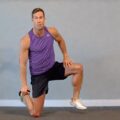Start Your Day Right with a Quick Morning Mobility Routine
Mornings set the tone for our entire day. By incorporating a quick morning mobility routine into your daily ritual, you can awaken your body, energize your mind, and cultivate a sense of wellbeing that carries you through whatever challenges lie ahead. This gentle practice is not about pushing yourself to extremes or optimizing every second – rather, it’s an act of self-compassion that allows you to check in with your body and set positive intentions for the day ahead.
The Benefits of Morning Mobility
A morning mobility routine offers numerous benefits for both body and mind:
- Improves circulation and wakes up the body
- Increases flexibility and range of motion
- Reduces stiffness from sleep
- Boosts energy levels naturally
- Promotes mindfulness and body awareness
- Reduces stress and anxiety
- Sets a positive tone for the day
By dedicating just 5-10 minutes to gentle movement first thing in the morning, you’re making a small but powerful investment in your overall wellbeing.
Creating Your Morning Mobility Routine
The key to a successful morning mobility practice is to keep it simple, gentle, and enjoyable. There’s no need for complex exercises or equipment. Focus on movements that feel good and help you connect with your body. Here are some ideas to get you started:
- Gentle neck rolls: Slowly roll your head in circles, releasing any tension in your neck and shoulders.
- Shoulder shrugs and circles: Lift your shoulders towards your ears, then roll them back and down.
- Torso twists: Gently twist your upper body from side to side, awakening your spine.
- Cat-cow stretches: On hands and knees, alternate between arching and rounding your back.
- Gentle forward folds: From a standing position, slowly fold forward, letting your head and arms hang heavy.
- Knee hugs: Lying on your back, hug one knee at a time to your chest.
- Ankle and wrist circles: Rotate your ankles and wrists in both directions.
Remember, this is your practice. Feel free to modify or adapt these movements to suit your body’s needs and preferences.
Mindfulness and Intention Setting
As you move through your morning mobility routine, try to cultivate a sense of mindfulness. Pay attention to how your body feels, noticing any areas of tension or discomfort without judgment. Take slow, deep breaths, allowing your breath to guide your movements.
This is also an excellent time to set intentions for your day. As you stretch and move, consider what you hope to accomplish or how you want to feel. Perhaps you want to approach the day with patience, kindness, or gratitude. By combining physical movement with positive intentions, you’re nurturing both your body and mind.
Incorporating Morning Mobility into Your Routine
Consistency is key when it comes to reaping the benefits of a morning mobility practice. Here are some tips to help you make it a regular part of your routine:
- Start small: Even 5 minutes can make a difference. Gradually increase the duration as it becomes a habit.
- Prepare the night before: Lay out comfortable clothes or a yoga mat to remove barriers in the morning.
- Link it to an existing habit: Do your mobility routine right after brushing your teeth or making your bed.
- Be flexible: If you miss a morning, don’t be hard on yourself. You can always do a quick mobility session later in the day.
- Make it enjoyable: Play soft music, light a candle, or practice outdoors to enhance the experience.
Remember, this practice is about nurturing yourself, not adding another item to your to-do list. Approach it with kindness and compassion.
Listening to Your Body
As you develop your morning mobility routine, it’s crucial to listen to your body and respect its limits. Some days you may feel energized and want to do more, while other days you might need to take it slower. Trust your instincts and adjust your practice accordingly.
If you have any existing health conditions or injuries, it’s always wise to consult with a healthcare professional before starting a new movement routine. They can provide personalized advice and ensure that your practice is safe and beneficial for your unique needs.
FAQ: Quick Morning Mobility
1. How long should my morning mobility routine be?
A morning mobility routine can be as short as 5 minutes or as long as 20-30 minutes. Start with what feels manageable for you and gradually increase the duration if desired.
2. Do I need any special equipment for morning mobility exercises?
No special equipment is necessary. While a yoga mat can be comfortable, you can perform most morning mobility exercises on a carpeted floor or even in bed.
3. Is it better to do morning mobility before or after breakfast?
This is a personal preference. Some people prefer to move before eating, while others find they have more energy after a light breakfast. Experiment to see what works best for you.
4. Can morning mobility replace my regular workout routine?
Morning mobility is not intended to replace a full workout routine. Rather, it complements other forms of exercise by improving flexibility and preparing your body for more intense activities.
5. What if I’m not a morning person?
While morning mobility can be beneficial, the most important thing is finding a time that works for you. If mornings are challenging, try incorporating mobility exercises into your lunch break or evening routine instead.
Remember, the goal of a morning mobility routine is to start your day with self-care and mindfulness. By taking a few minutes to connect with your body and set positive intentions, you’re creating a foundation for a more balanced, compassionate, and fulfilling day ahead. Be patient with yourself as you develop this new habit, and celebrate the small victories along the way. Your body and mind will thank you for this investment in your wellbeing.









